It can be disconcerting to notice your neighbor continuously peering over your fence. While it’s natural to feel uneasy about this situation, it’s essential to handle it tactfully to maintain a peaceful neighborhood. This guide will provide practical advice on how to address this issue, considering legal aspects, communication strategies, and possible solutions that respect both personal privacy and neighborly relations.
Understanding Fencing Laws: A Comprehensive Guide
Firstly, understanding your local laws and regulations about fencing is a crucial step. Fencing laws vary from one jurisdiction to another, and they dictate the height, type, and location of fences. Generally, privacy fences should not exceed 6 feet in height, but it’s vital to check with your local city or county regulations to ensure compliance. It’s also worth looking into ‘Right to Privacy’ laws in your state, as, in some cases, a neighbor constantly looking over your fence could be considered an invasion of privacy. However, these laws can be complex and may require professional legal advice. For more precise information, consider contacting a local attorney or your homeowner’s association if you have one.
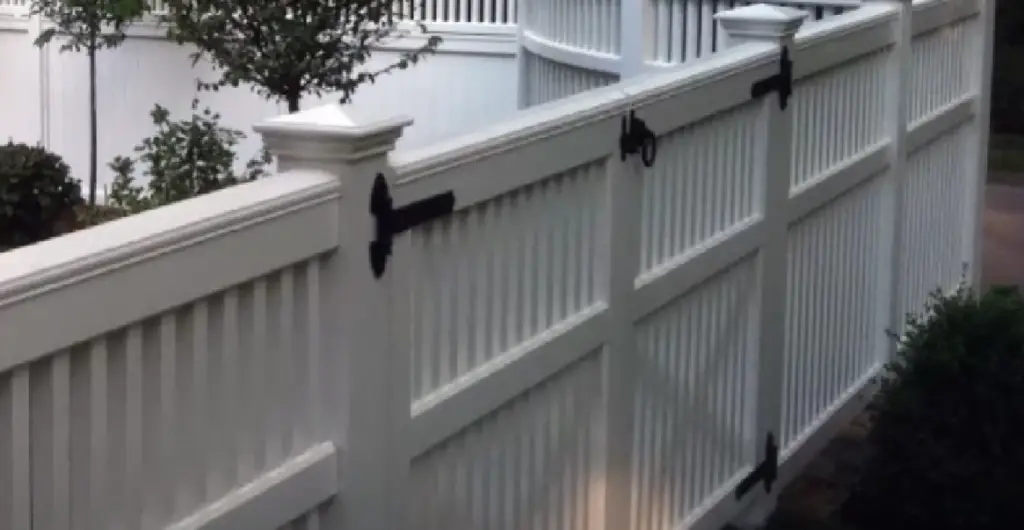
Another important factor to consider is whether the peering neighbor is on their property or if they have stepped onto yours. In this case, you may be able to request that they remain within their own boundaries and respect your privacy. Lastly, it’s worth noting that in some states, fencing laws dictate that neighbors must pay for half of a shared fence. This only applies if the fence is necessary for the division of respective properties, protection from trespassers or to protect private property from public hazards.
Communicating With Your Neighbor
Once you have a better understanding of your local fencing laws and regulations, it’s time to start addressing the issue with your neighbor. Consider being courteous and respectful when having this conversation, as it’s essential to keep the peace.
It may be challenging to confront someone face-to-face, but in most cases, this type of communication can help both parties understand each other better.
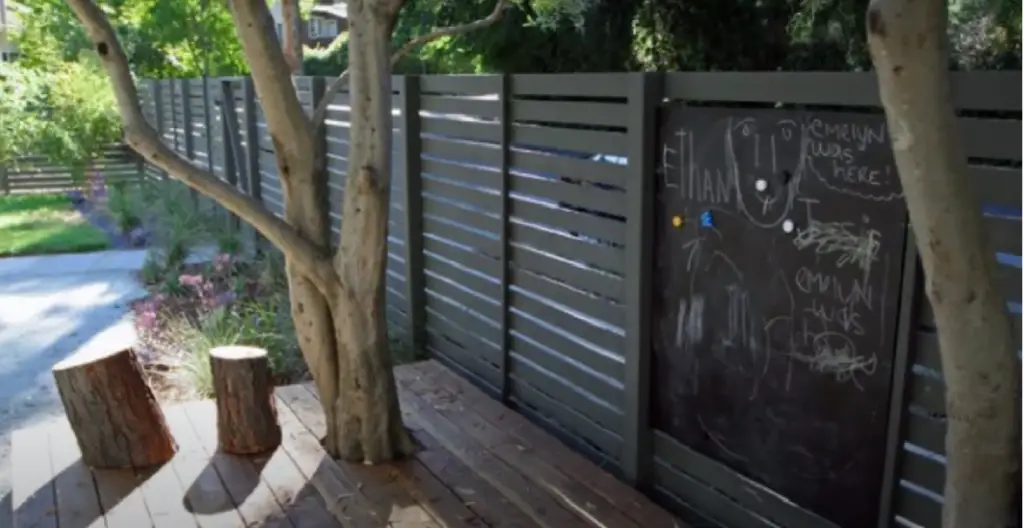
If your neighbor has a legitimate reason for peering over your fence, such as wanting to ensure their pet is safe, it’s important to remember that they probably aren’t trying to invade your privacy. In this case, you could suggest alternative solutions like installing a camera or providing them with updates about their pet. Furthermore, if you are both on friendly terms and the issue can be easily solved, consider suggesting a compromise. That could mean blocking the view by installing additional fencing or plants that would help maintain privacy without breaking any local laws. [1]
Possible Solutions
If your neighbor remains uncooperative and their behavior continues to be disruptive, it may be time to consider other courses of action. Depending on the severity of the situation, you may want to contact your homeowner’s association or the police. You could also file a restraining order if the neighbor continues to step onto your property, but this may be a last-resort measure due to the legal procedures involved.

In some cases, you may need additional privacy protection and decide that it’s best to install higher fencing. However, before doing so, make sure that you are still in compliance with local laws and regulations. Also, bear in mind that higher fences can cause tension between you and your neighbor, so be sure to discuss it with them beforehand. Ultimately, the goal is to reach a mutual agreement that respects both parties’ privacy and rights.
Is it okay to discreetly look over someone’s fence?
The answer to this question can be a bit complex, as it can depend on various factors such as local laws, community norms, and individual privacy expectations. Generally, a brief, occasional glance may not be considered an invasion of privacy, especially if done without any ill intent.
If you’re unsure about what’s acceptable, consider how you’d feel if the roles were reversed. Ultimately, maintaining good relations with your neighbors is a critical aspect of community living.
Is planning permission required for the installation of a fence?
Whether or not planning permission is required for the installation of a fence depends largely on your local regulations and laws. In general, installing a fence below a certain height – typically around 6 feet (2 meters) – does not require planning permission. However, if the fence exceeds this height, you may need to apply for permission. Also, if your property is near a public road, has a listed status, or is located within a conservation area, additional rules may apply. It’s always recommended to check with your local planning authority before proceeding with the installation of a new fence. Remember, non-compliance with local regulations can lead to fines and could require the removal or alteration of the fence.
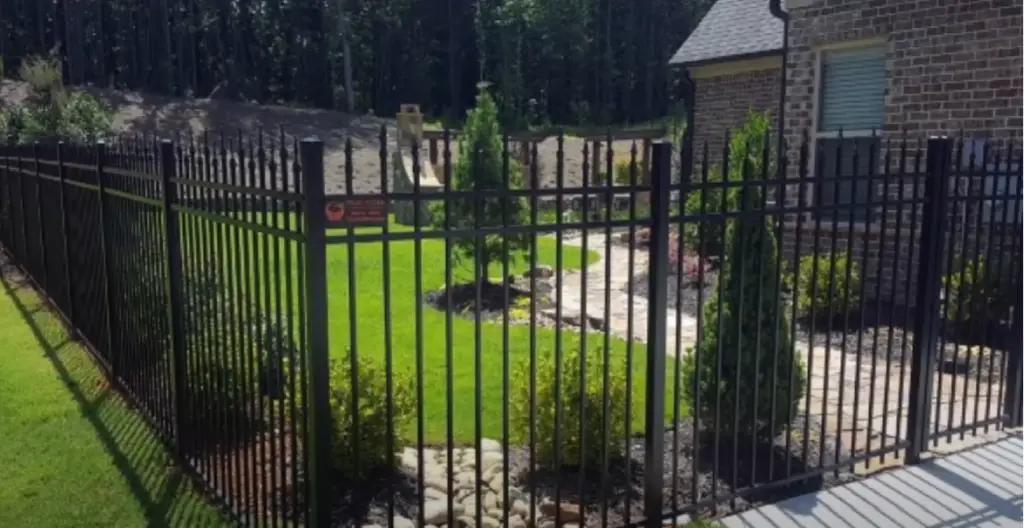
Before installing a fence, consider applicable laws, regulations, and your neighbor’s concerns. By taking the time to understand the legal requirements and speaking with your neighbor, you can ensure that both parties are satisfied with the outcome and maintain a happy living environment. [3]
Tips for Handling Nosy Neighbors Peeking Over Your Fence
Handling nosy neighbors who are constantly peeking over your fence can be a tricky situation. Here are some handy tips to guide you:
Maintain Open Communication: Always maintain an open line of communication with your neighbor. Discuss your concerns with them, and try to find out their reasons for looking over your fence. The issue could be resolved with a simple conversation.
Create Physical Barriers: You could consider adding physical barriers such as trellises, shades, or plants to maintain your privacy. However, always consult your local regulations before implementing any changes to the fence.
Use Blinds or Curtains: If the issue is concerning the privacy of your home’s interior, consider using blinds, curtains, or window films for added privacy.
Involve Your Homeowner’s Association: If conversations with your neighbor do not yield any results, you can involve your homeowner’s association. They can mediate the situation and provide solutions based on community guidelines.
Seek Legal Advice: If your neighbor continues to invade your privacy, it might be time to seek legal advice. A legal professional can guide you on the right course of action based on your local laws and regulations.
Install Security Cameras: Security cameras can deter nosy neighbors and provide you with evidence should the situation escalate.
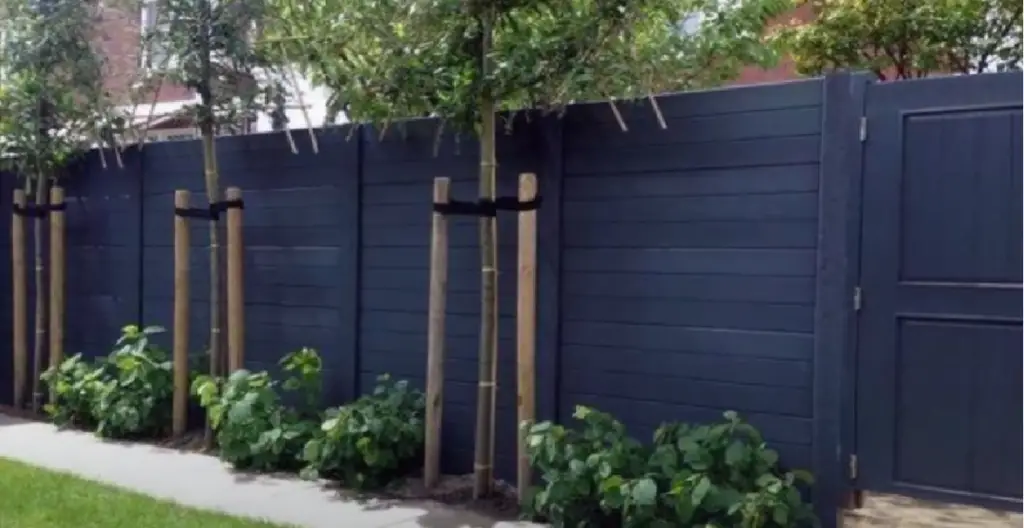
Remember, every situation is unique, and the tips provided should be adapted to fit your specific circumstances. Always try to resolve the issue amicably before resorting to drastic measures.[5]
What can I add to the fence for privacy?
Adding elements to your fence for enhanced privacy can be an effective solution. Here are some options you might consider:
Install Privacy Slats: Privacy slats are an inexpensive and straightforward solution. They can be easily inserted into your existing chain link fence to create a visual barrier.
Use Trellises: A trellis with climbing plants not only increases privacy but also adds a dash of nature to your yard. Choose plants that grow thick and wide for optimum coverage.
Install a Privacy Screen: Privacy screens come in various materials, such as wood, bamboo, or even woven willow twigs, and they can substantially enhance privacy.
Grow a Hedge: Planting a hedge can be a great natural fence. Choose fast-growing shrubs or trees for quicker results.
Add Fence Extensions: Extensions can increase the height of your fence, thereby adding privacy. Make sure this complies with local regulations before proceeding.
Use Hanging Baskets or Planters: You can hang baskets or planters filled with tall plants along the fence to obstruct the view.
Remember, while all of these options can help improve your privacy, it’s important to maintain good relations with your neighbors. Wherever possible, involve them in the process and ensure any changes comply with local laws and regulations.[4]
FAQ
Can I paint my side of my neighbor’s fence?
Whether or not you can paint your side of your neighbor’s fence largely depends on both the specific laws in your area and the agreement you have with your neighbor. In many places, you do not have the legal right to alter the appearance of a fence that doesn’t belong to you, even if it borders your property. However, if you have an understanding or agreement with your neighbor, they may allow you to paint your side. It’s always recommended to have clear, open communication about such matters to prevent any disputes. Before making any changes, make sure to check your local regulations and discuss your intentions with your neighbor.
Can I trim my neighbor’s hedge or fence?
Whether or not you can trim your neighbor’s hedge or fence depends on who owns the hedge and/or fence. If it is located on your property, then you have the right to trim it as you see fit. However, if it is located on your neighbor’s property, then they are the owners, and any trimming needs to be done with their permission. It is best to discuss your intentions with them first before taking action. Additionally, some local regulations may limit how much you can trim another’s property without prior written consent, so make sure to consult your local laws beforehand. [5]
Is it possible to install a privacy screen on the current fence?
Yes, it is certainly possible to install a privacy screen on your existing fence. It’s an effective way to enhance your privacy without necessarily replacing the entire fence. You have a variety of options to choose from, including vinyl screening, bamboo or reed screening, lattice panels, or even a vertical garden which adds both privacy and a touch of nature. However, it’s crucial to ensure any additions to your fence comply with local regulations. It’s also a good idea to discuss your plans with your neighbor to maintain a harmonious relationship. Always remember, the best solutions are those that respect both your privacy needs and your neighborly relations.
What should I do if my neighbor’s fence is in disrepair?
If your neighbor’s fence is in a state of disrepair, the first step would be to speak to them about it. Many times, people are not aware that their fences need maintenance. It may be an issue of finances, or they may simply be unaware of the problem. If a conversation does not work, you can always involve your homeowner’s association to mediate or offer solutions. Finally, if all else fails, it is possible to take legal action against the neglectful neighbor and seek compensation for any damages that you incur due to their negligence. However, this should be used as a last resort only.
It is important to remember that fences are meant to be shared, and it is in everyone’s best interest to maintain a friendly relationship with your neighbor. Try to provide solutions that resolve the problem amicably, keeping their needs in mind as well. With open communication and collaborative efforts, you can come up with a solution that works for both of you.
Can my neighbor attach a trellis to my fence?
Whether or not your neighbor can attach a trellis to your fence depends on your local laws and the agreement between you and your neighbor. Most often, if the fence is on your property, your neighbor does not have the right to attach anything to it without your permission. However, if you both share ownership of the fence, they may be able to add the trellis, especially if it doesn’t cause any damage or hardship. It’s always advisable to maintain open communication and to consult with each other before making any changes to shared structures. Ultimately, any alterations should be made in accordance with local laws and mutual respect for each other’s property and privacy.[6]
What should I do about my neighbor’s tree that hangs over my fence?
If your neighbor’s tree hangs over your fence, there are several steps you can take. First, try having a friendly conversation with your neighbor about your concerns. They may be willing to trim the branches on their own or allow you to do so. If you have the legal right to trim any overhanging branches, make sure to do so within your property line. You should not cross into your neighbor’s property without permission. It is important to note that legal rights can differ based on local regulations, therefore it is advisable to seek guidance before proceeding with any course of action. If your neighbor refuses to address the issue and the overhanging branches pose a risk to your property, you may need to seek legal advice. Remember, the key is to resolve this issue amicably and maintain a good relationship with your neighbor.
Can my neighbor place things on my wall?
Whether your neighbor can lean things on your wall is subject to local laws and any mutual agreements between you and your neighbor. Generally, without explicit permission, it isn’t considered appropriate for a neighbor to use your wall for leaning objects. This might damage the wall or pose a risk to the safety of both parties. If you own the wall—meaning it’s entirely within your property lines—then your neighbor does not have the right to lean anything against it without your consent. If the wall lies on the boundary line, then it’s typically shared, and both parties consent might be necessary for such uses. If this becomes an issue, it’s recommended to have an open conversation with your neighbor to address your concerns. If this doesn’t resolve the issue, consult with local laws and possibly legal counsel. Remember, the goal is to maintain a harmonious relationship with your neighbor while protecting your rights and property.
Can my Neighbour attach things to my fence posts?
The ability of your neighbor to attach things to your fence posts is primarily governed by who owns the fence and local regulations. If the fence is entirely within your property, your neighbor does not have the right to attach anything to it without your consent. However, if the fence is on the boundary line, it is typically considered shared, and both parties consent may be necessary for such modifications. It’s best to communicate openly with your neighbor about such matters thus preventing any potential disputes. Always make sure to consult your local regulations and discuss any plans with your neighbor before taking action. This way, you can both enjoy a harmonious relationship while respecting each other’s rights.
Can I make a hole in my neighbor’s fence?
Making a hole in your neighbor’s fence without their permission is generally not advisable, as it could potentially lead to legal disputes. If the fence lies entirely within your neighbor’s property, they have the legal rights to it, and damaging it in any way could be considered vandalism. If the fence is on the boundary line and shared, you should still seek your neighbor’s consent before making any modifications. Maintaining open communication and discussion is key to any concerns or plans with your neighbor to maintain a harmonious relationship. Remember, any actions you take should respect both your rights and your neighbor’s, and comply with local regulations. Always consult these before making any modifications to a shared fence.[2]
How close can you put a fence to a property line?
The distance at which you can place a fence from a property line can vary greatly based on local regulations and ordinances. In some areas, you may be permitted to build a fence right up to the property line, while in others, there may be a specific setback requirement dictating how far from the boundary line the fence must be. It’s important to check with your local zoning and building department or homeowner’s association for these regulations before erecting a fence. Additionally, you should consider having a professional land surveyor confirm your property lines to avoid any potential disputes with neighbors. Remember, adhering to local laws and maintaining open communication with your neighbors can go a long way in avoiding any conflicts.
Useful Video: Connecting To Neighbors Fence – Fence Etiquette
Conclusion
In conclusion, dealing with nosy neighbors or disputes relating to shared boundaries can be challenging, and it requires tact, understanding, and, often, knowledge of local laws. The options offered in this guide, from installing privacy screens to painting your side of the fence, could help improve your privacy and potentially alleviate some of the stress associated with these issues. However, it’s crucial to remember that maintaining open communication and good relations with your neighbors should always be a priority. Any changes you plan to make should be discussed with them and must comply with local regulations to avoid legal disputes. It’s about finding a balance between respecting boundaries, asserting your rights, and living peacefully within your community.
References:
- https://privacyarena.com/neighbors-peeking-over-fence-how-to-protect-your-privacy/
- https://www.solentfencing.co.uk/garden-fence/
- https://www.hitchcockandking.co.uk/advice/uk-fencing-laws-explained/
- https://renovatecentral.com/how-do-i-stop-my-neighbor-from-peeking-over-the-fence/
- https://www.thisoldhouse.com/yards/21018864/10-ways-to-add-privacy-to-your-yard
- https://homeardent.com/neighbor-keeps-looking-over-fence/


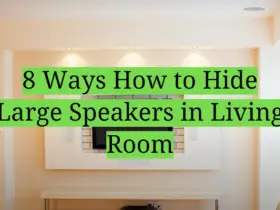


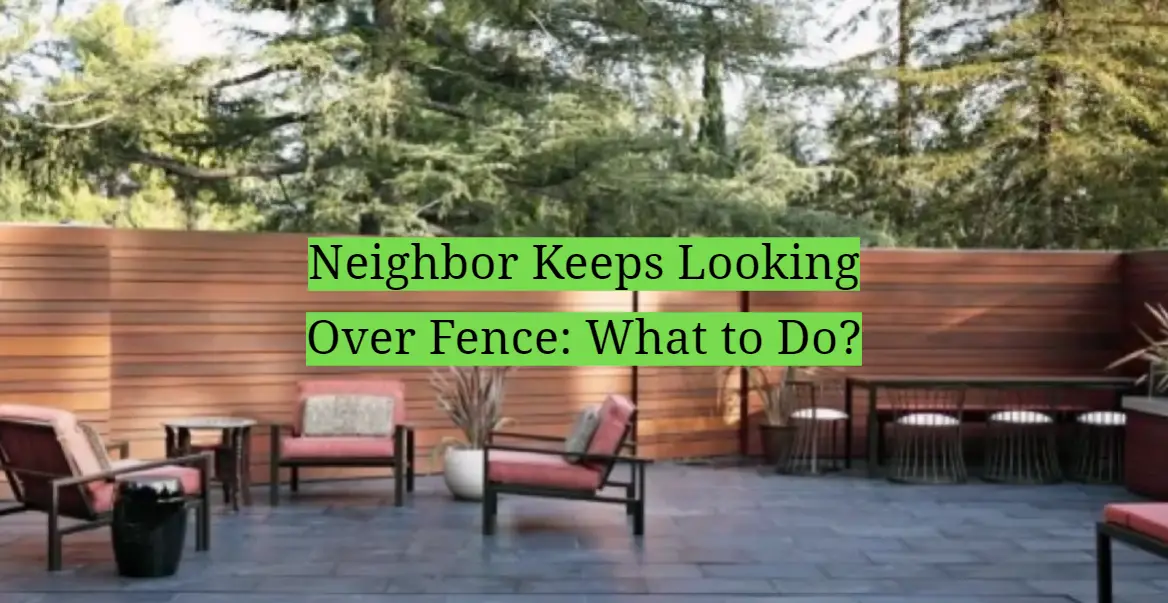








Leave a Reply